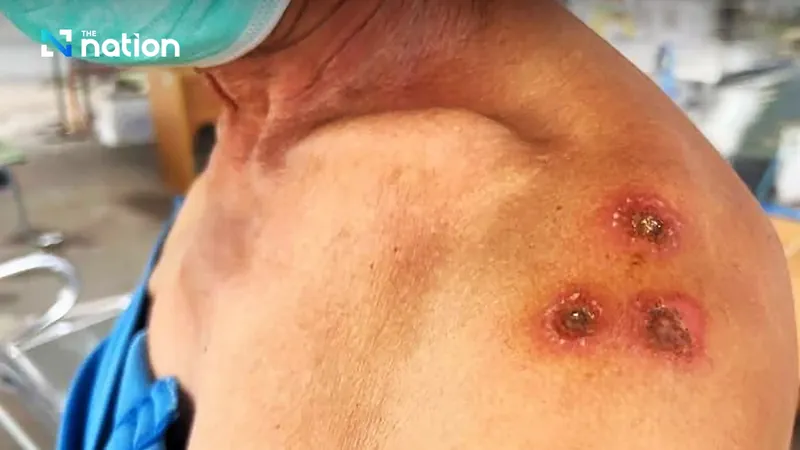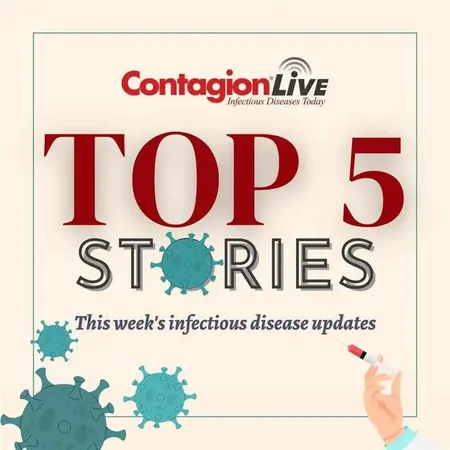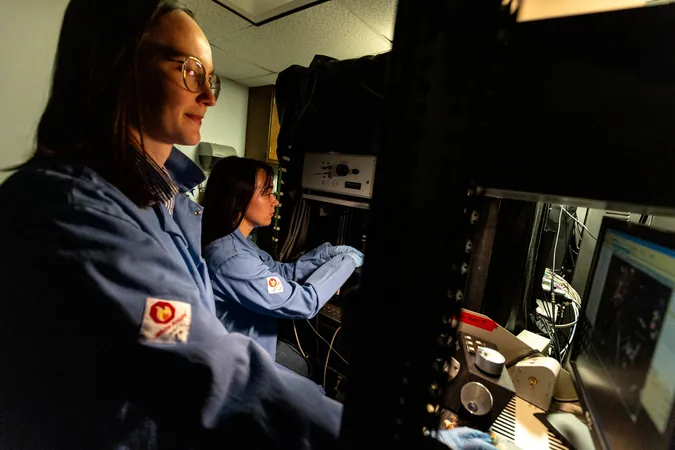
Urgent Anthrax Alert: Contact Tracing Launched in Nong Bua Lamphu
2025-05-30
Author: Jia
In a shocking development from Nong Bua Lamphu, a man from Sub Phu Kao village is under close medical supervision after displaying alarming symptoms consistent with anthrax, prompting urgent health measures.
The patient, a local butcher, presented with severe itchy blisters that began on his back and spread to his arms, abdomen, and shoulders. Initially concerning red edges transformed into pus-filled centers, eventually turning into black scabs that alarmed both medical staff and health officials.
Preliminary tests confirmed the presence of Bacillus anthracis, the bacterium responsible for this deadly disease, leading doctors to suspect anthrax infection. He is currently hospitalized at Non Sang Hospital, where medical professionals are closely monitoring his condition.
Investigating the Source of Infection
The Public Health Ministry's Surveillance and Rapid Response Team has traced the likely source of infection back to May 23, when the patient participated in butchering a cow. After processing, the beef was served as larb—a popular raw spicy beef salad—among four friends. This event is believed to be the crucial point of contamination.
Despite this alarming situation, the man’s family, who live in the same household, did not consume the meat and are reportedly symptom-free.
Swift Action to Contain the Outbreak
To avoid a possible anthrax outbreak, the Non Sang District Situation Awareness Team is aggressively pursuing contact tracing and conducting a thorough investigation into the source of the contaminated meat. This operation is in collaboration with the Joint Investigation Team from the Provincial Public Health Office and the Livestock Office.
Non Sang Hospital has ramped up its surveillance and precautionary measures, sending samples to specialized institutes for further confirmation.
Understanding Anthrax: What You Need to Know
Anthrax is a serious and infectious disease caused by Bacillus anthracis, commonly found in soil and animal products. The bacteria can form spores that survive in the environment for over a decade, posing a persistent risk to public health.
Key transmission routes include:
- Direct contact with infected animals or their remains.
- Consumption of contaminated meat.
- Inhalation of spores from the environment.
The incubation period typically spans 1 to 5 days, and primary animal carriers include cattle, sheep, and goats—the very animals butchered for meat.
High-Risk Groups and Public Health Advisory
High-risk groups include butchers, veterinarians, and consumers of raw meat. In light of this incident, residents are strongly advised to avoid all forms of raw meat, especially those not inspected by veterinary authorities.
If anyone experiences unusual skin symptoms or has been in contact with animal carcasses, immediate medical evaluation is crucial to prevent wider transmission. The time to act is now to safeguard community health against this potentially deadly disease.



 Brasil (PT)
Brasil (PT)
 Canada (EN)
Canada (EN)
 Chile (ES)
Chile (ES)
 Česko (CS)
Česko (CS)
 대한민국 (KO)
대한민국 (KO)
 España (ES)
España (ES)
 France (FR)
France (FR)
 Hong Kong (EN)
Hong Kong (EN)
 Italia (IT)
Italia (IT)
 日本 (JA)
日本 (JA)
 Magyarország (HU)
Magyarország (HU)
 Norge (NO)
Norge (NO)
 Polska (PL)
Polska (PL)
 Schweiz (DE)
Schweiz (DE)
 Singapore (EN)
Singapore (EN)
 Sverige (SV)
Sverige (SV)
 Suomi (FI)
Suomi (FI)
 Türkiye (TR)
Türkiye (TR)
 الإمارات العربية المتحدة (AR)
الإمارات العربية المتحدة (AR)